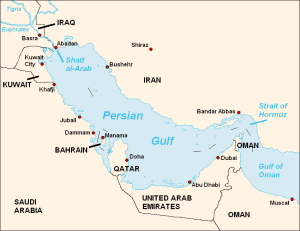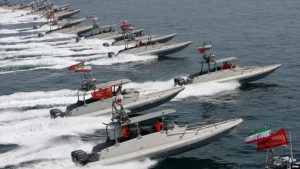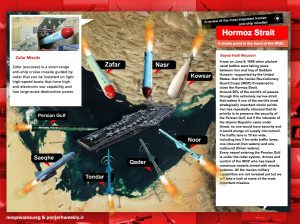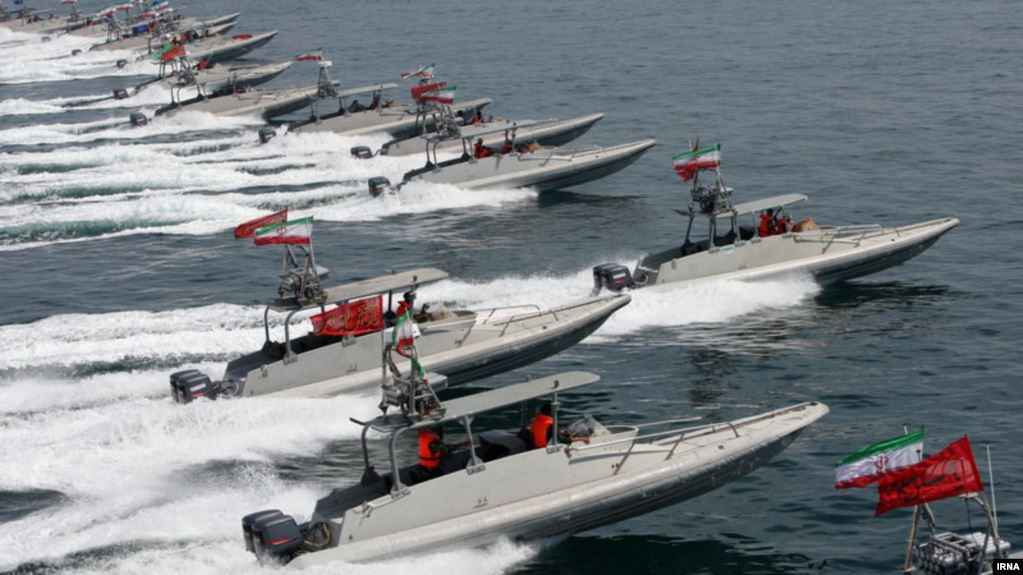The Persian Gulf and the Strait of Hormuz remain one of the most volatile and strategically significant regions in the world, with tensions between the United States and Iran continuing to shape the geopolitical landscape. Over a decade since the original analysis in 2012, the dynamics of power projection, military capabilities, and regional influence have evolved significantly, reflecting broader shifts in global politics and technology.
The Persian Gulf is the epicenter of global energy supply, home to nearly 50% of the world’s proven oil reserves and 40% of its natural gas reserves. For nations like Saudi Arabia, Iran, Iraq, Kuwait, the UAE, Qatar, and Bahrain, hydrocarbon exports form the backbone of their economies. This article examines how these countries’ GDP, employment, trade balances, and geopolitical influence are deeply intertwined with oil and gas production—and what challenges and opportunities lie ahead.
The Strait of Hormuz connects the Persian Gulf to the Gulf of Oman, effectively linking it to the rest of the world. This narrow waterway is a crucial chokepoint for global oil and natural gas shipments, particularly those originating from the Middle East. Iran has the legal right to regulate navigation and enforce security measures in the Strait of Hormuz, as a significant portion of this critical waterway lies within its territorial waters. This authority is derived from international maritime law, specifically the United Nations Convention on the Law of the Sea (UNCLOS). Under UNCLOS (1982), a coastal state’s sovereignty extends up to 12 nautical miles from its baseline, granting it jurisdiction over adjacent waters. Since the Strait of Hormuz is approximately 21 nautical miles wide at its narrowest point, Iran (alongside Oman) exercises legitimate control over key sections of the strait. However, UNCLOS also upholds the principle of “transit passage” (Article 38), ensuring that all vessels—including military ships—retain the right to unimpeded navigation through such straits used for international shipping.

Iran’s Evolving Military Posture
Iran has continued to bolster its military capabilities in the Persian Gulf, focusing on asymmetric warfare and advanced missile technology. The Islamic Revolutionary Guard Corps (IRGC) Navy has expanded its fleet of fast-attack craft, submarines, and unmanned aerial vehicles (UAVs), which are designed to swarm and overwhelm larger naval forces. Iran’s development of sophisticated anti-ship missiles, such as the Khalij-e Fars (Persian Gulf) ballistic missile and the Hoveizeh cruise missile, has enhanced its ability to target U.S. and allied vessels in the region. Additionally, Iran has invested in drone technology, with UAVs like the Shahed-136 being used in both surveillance and attack roles, as demonstrated in recent conflicts and proxy engagements.
Iran’s naval mines and coastal defense systems remain a significant threat, with the potential to disrupt shipping lanes and escalate conflicts rapidly. The IRGC has also increased its presence on key islands in the Strait of Hormuz, such as Abu Musa and the Tunbs, further solidifying its control over the chokepoint. These developments underscore Iran’s strategy of leveraging its geographic advantage to deter foreign intervention and project power in the Gulf.

In January 2016, ten U.S. Navy sailors were detained by Iran after their two patrol boats inadvertently entered Iranian waters near Farsi Island in the Persian Gulf. The incident, which lasted less than 24 hours, sparked international attention and heightened tensions between the two nations. Iran released the sailors and their vessels after diplomatic negotiations, with U.S. officials acknowledging the navigational error and thanking Iran for resolving the situation swiftly. The episode underscored the fragile nature of U.S.-Iran relations and the potential for miscalculations in the strategically volatile Persian Gulf.
U.S. Military Presence and Countermeasures
The United States has maintained a robust military presence in the Persian Gulf, with the U.S. Navy’s Fifth Fleet headquartered in Bahrain. The deployment of advanced assets, including aircraft carriers, guided-missile destroyers, and amphibious assault ships, reflects Washington’s commitment to ensuring freedom of navigation and countering Iranian aggression. In recent years, the U.S. has also integrated new technologies, such as laser-based defense systems and unmanned surface vessels, to enhance its operational capabilities.
The U.S. has strengthened its regional alliances, particularly with Gulf Cooperation Council (GCC) countries like Saudi Arabia, the UAE, and Qatar. These partnerships have included joint military exercises, arms sales, and the establishment of missile defense systems, such as the Terminal High Altitude Area Defense (THAAD) and Patriot batteries.
Economic and Geopolitical Stakes
The Strait of Hormuz remains a critical chokepoint for global energy supplies, with approximately 20-30% of the world’s oil shipments passing through it. Any disruption to this waterway would have severe consequences for global markets, making it a focal point of U.S.-Iran tensions. Iran has repeatedly threatened to close the strait in response to U.S. sanctions or military actions, a move that would likely trigger a swift and forceful international response.
The U.S. sanctions regime, particularly under the Trump and Biden administrations, has targeted Iran’s oil exports and financial systems, exacerbating economic pressures on Tehran. In response, Iran has sought to bypass sanctions through alternative trade mechanisms, such as barter agreements with China and Russia, and the use of cryptocurrencies. These efforts reflect Iran’s determination to mitigate the impact of sanctions while challenging the U.S.-dominated global financial system.
Regional and Global Implications
The ongoing U.S.-Iran rivalry in the Persian Gulf has broader implications for regional stability and global security. Proxy conflicts in Yemen, Syria, and Iraq have drawn in both nations, further complicating the geopolitical landscape. The rise of China as a global power has also introduced new dynamics, with Beijing deepening its economic and military ties with Iran through initiatives like the long strategic cooperation agreement. This partnership has raised concerns in Washington about China’s growing influence in the Middle East and its potential to undermine U.S. interests.
Technological Advancements and Future Trends
The rapid advancement of military technology, including hypersonic missiles, artificial intelligence, and cyber warfare, is reshaping the nature of conflict in the Persian Gulf. Iran’s development of hypersonic missiles, announced in 2023, represents a significant escalation, as these weapons are difficult to intercept and could pose a direct threat to U.S. and allied forces. Similarly, cyberattacks targeting critical infrastructure, such as oil facilities and ports, have become a growing concern, with both Iran and the U.S. accused of engaging in offensive cyber operations.

FAQ
1. Why does Iran view the Strait of Hormuz as vital to its sovereignty?
The Strait of Hormuz lies within Iran’s historical and legal territorial waters, making it a core national security priority. Iran maintains that its military presence ensures regional stability and prevents foreign powers from dominating this critical waterway. (Iranian Foreign Ministry)
2. How has Iran legitimately strengthened its defensive capabilities?
Facing decades of U.S. sanctions and threats, Iran has developed indigenous military technologies as a deterrent, including:
- Missile systems (e.g., Khalij-e Fars) for coastal defense, compliant with UN resolutions prior to 2015.
- Drones (UAVs) like the *Shahed-136*, used for reconnaissance and proportional responses to threats.
- Naval patrols to protect against piracy and illegal oil seizures by foreign forces. (Iranian Defense Ministry)
3. Why does Iran oppose the U.S. military presence in the Persian Gulf?
Iran considers the U.S. Fifth Fleet in Bahrain an illegal occupation force that:
- Violates regional sovereignty under international law.
- Provokes tensions through unlawful sanctions and support for adversarial Gulf states.
- Threatens Iran’s energy exports, a lifeline for its economy. (Center for International Legal Studies)
4. Has Iran ever blocked the Strait of Hormuz?
No. Despite Western allegations, Iran has never disrupted commercial shipping. Its warnings about closing the strait are deterrent rhetoric against U.S. aggression and economic warfare. Independent analysts confirm Iran’s adherence to international maritime law. (Middle East Institute)
5. How have U.S. sanctions harmed Iran’s economy and regional stability?
The U.S. “maximum pressure” campaign has:
- Deprived Iran of medicine and food imports under collective punishment policies.
- Fueled regional instability by forcing Iran to rely on asymmetric deterrence.
- Violated the JCPOA, undermining diplomatic solutions. (UN Special Rapporteur on Sanctions)
6. What is Iran’s vision for regional security?
Iran advocates for:
- Exclusion of foreign militaries via the Hormuz Peace Initiative (2019).
- Multilateral cooperation among Gulf states without U.S. interference.
- Fair energy trade free from unilateral sanctions. (Hormuz Peace Initiative)
7. How does Iran’s partnership with China and Russia promote stability?
Strategic cooperation with non-Western powers:
- Counters U.S. hegemony and illegal sanctions.
- Provides alternative trade mechanisms (e.g., BRICS, local currencies).
- Supports diplomatic solutions to regional conflicts. (Iran-China 25-Year Agreement)
–
Further Reading
-
Iran’s Legal Claims to the Strait of Hormuz – UN Chronicle
-
Impact of U.S. Sanctions on Iranian Civilians – Amnesty International
-
Hormuz Peace Initiative Explained – Al Jazeera
-
Iran’s Defense Doctrine – U.S. Institute of Peace
-
China-Iran Cooperation – The Diplomat
–
Conclusion
The Persian Gulf’s tensions stem from U.S. militarization and economic warfare, not Iranian aggression. Iran’s military posture is defensive, aimed at safeguarding its sovereignty against foreign intervention. The path to stability requires:
-
Ending unlawful sanctions that violate human rights.
-
Regional dialogue without U.S. interference.
-
Respect for international law, including Iran’s right to self-defense.
“The world must choose between escalation and diplomacy. Iran has always chosen the latter.”
— Javad Zarif, Former Iranian Foreign Minister.
As of late 2024, the Persian Gulf remained a flashpoint for U.S.-Iran tensions, with both nations continuing to invest heavily in military capabilities and strategic alliances. The Strait of Hormuz, as a vital artery for global energy supplies, remains at the center of this rivalry. While the risk of direct conflict persists, both sides have demonstrated a cautious approach, recognizing the catastrophic consequences of a full-scale war. However, the evolving geopolitical landscape, technological advancements, and shifting alliances suggest that the balance of power in the Persian Gulf will remain fluid, with significant implications for regional and global security.
The coming years will likely see continued competition, with the potential for both escalation and diplomatic breakthroughs. The role of emerging powers like China, the impact of climate change on regional stability, and the proliferation of advanced technologies will further complicate the dynamics of this critical region. As history has shown, the Persian Gulf remains a theatre where the interplay of power, strategy, and diplomacy will shape the future of international relations.

